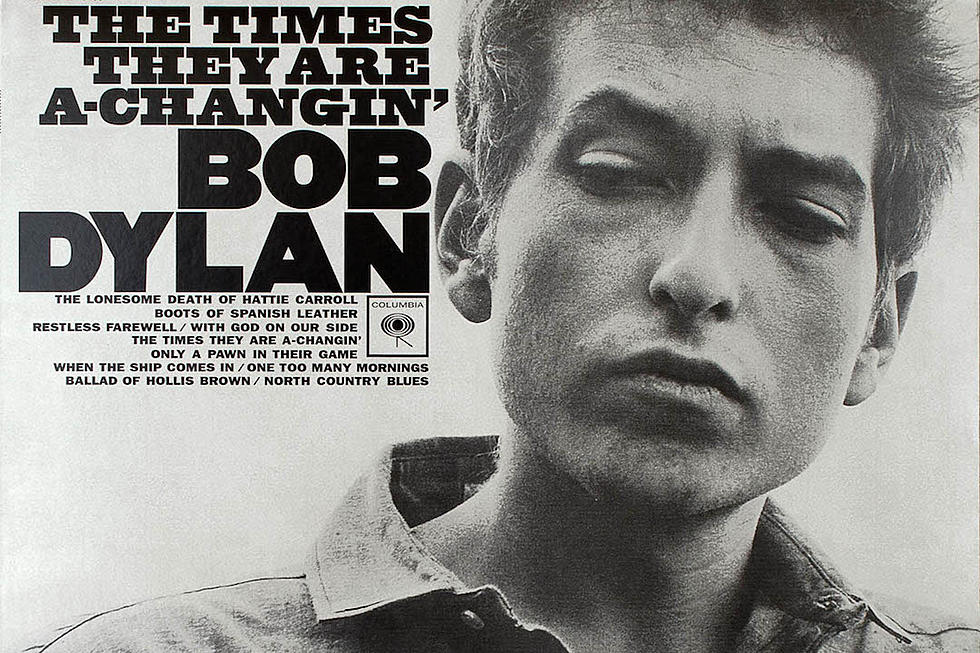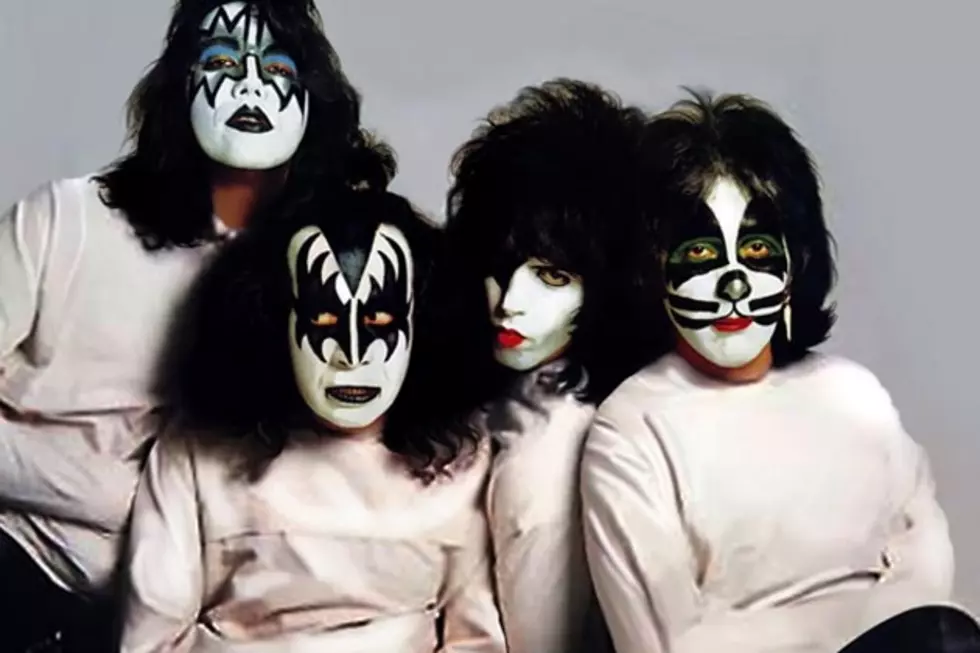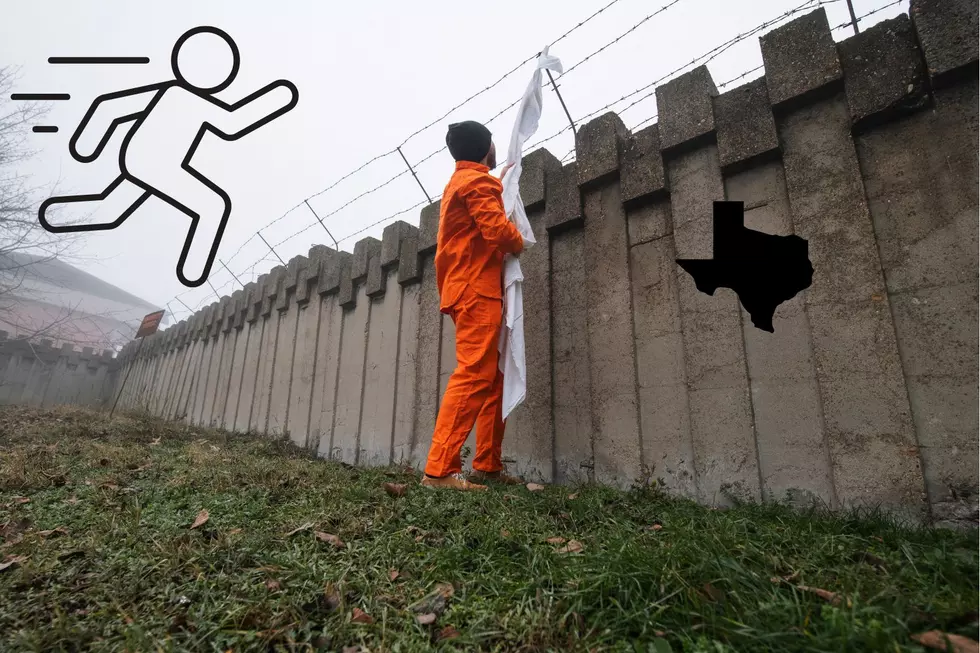
When the Wheels Came Off: The History of Bob Dylan in the ’80s
"I wouldn't do half the things I do if I was thinking about having to live up to a Bob Dylan myth."
By the '80s, Bob Dylan's fans had long since been forced to grow accustomed to the Bard's mercurial muse – both on and off the stage. He was just as likely to give listeners what they wanted as he was to wander off on some musical tangent that might have been meaningful only to him. But his lows were always followed by often-delirious highs, and even at his most challenging and inscrutable, Dylan's records seemed to have some level of meaning, even if most of his fans couldn't appreciate it. During his frequently derided born-again phase of the late-'70s and early-'80s, for example, he was dedicated to what he felt was a higher power.
Dylan's religious fervor produced some of his less-beloved albums, but with 1983's Infidels, he seemed to shake off the creative doldrums. Sadly, that respite would prove to be short-lived; in fact, that album presaged a period of profound creative drift that drove his recording career into a seemingly irreversible slump even as he managed to mount some of his more financially successful tours. To this point, new Dylan records had always been an event; by the time he eked out 1988's Down in the Groove, they were hard to even look forward to.
Part of the problem, he acknowledged, was simply coming up with new songs that could stand alongside all the towering classics in his back catalog. "There’s still things I want to write about, but the process is harder," he told the Sunday Times in 1984. "The old records I used to make, by the time they came out I wouldn’t even want them released because I was already so far beyond them."
Watch Bob Dylan's Video for 'Jokerman'
He expanded on this problem in a 1985 interview with Bill Flanagan, saying, "When I'm making a record I'll need some songs, and I'll start digging through my pockets and drawers trying to find these songs. Then I'll bring one out and I've never sung it before, sometimes I can't even remember the melody to it, and I'll get it in. Sometimes great things happen, sometimes not-so-great things happen. But regardless of what happens, when I do it in the studio it's the first time I've ever done it. I'm pretty much unfamiliar with it. In the past what's come out is what I've usually stuck with, whether it really knocked me out or not. For no apparent reason I've stuck with it, just from lack of commitment to taking the trouble to really get it right. I didn't want to record that way anymore. ... About two years ago I decided to get serious about it, and just record."
"There’s never really been any glory in it for me," he insisted during his conversation with the Sunday Times. "Being seen in the places and having everybody put their arm around you, I never cared about any of that. I don’t care what people think. For me, the fulfillment was always in just doing it. That’s all that really matters."
A noble outlook, but one Dylan seemed to lose sight of during the drawn-out sessions for his 'Infidels' follow-up. Released on June 10, 1985, Empire Burlesque stitched together a patchwork of new songs that had been recorded in a variety of studios with a long list of session players – all of which were then polished by Arthur Baker, a prolific producer and DJ who'd risen to prominence as a house producer for the rap label Tommy Boy Records before branching out into 12" remixes for rock artists like Bruce Springsteen and Hall and Oates. Needless to say, many fans were taken aback by the album's polished sound.
Of his decision to work with producer Baker on Empire Burlesque, Dylan said, "I just went out and recorded a bunch of stuff all over the place and then when it was time to put this record together I brought it all to him and he made it sound like a record. Usually I stay out of that side of the finished record."
That might seem a tad disconnected – or even somewhat lazy – but it jibed perfectly with Dylan's usual approach to his music, at least according to guitarist Ron Wood, who was present throughout many of the Burlesque sessions.
Recalling an aborted attempt to record with a pickup band assembled by Al Green, Wood said, "Every time he'd have the same attitude. The weak side of him would come out. They'd say, 'Hey Bob, we don't need this,' and he'd say, 'Oh, okay.' And they'd make a mix to their ears, and he'd just stand outside and let them do it. And I'd be saying, 'Hey! You can't let these guys ... look! They've left off the background vocals!' or 'What about the drums!'"
Although reviews were generally favorable and the album broke the Top 40, there was no disguising the generally diffuse nature of the songs, or the fact that the jarring production suggested an artist who'd lost touch with how to best serve his own material. At the time, while he was willing to admit that the record didn't turn out exactly the way he'd planned – and he expressed an urge to go further artistically – he seemed fairly happy with Burlesque.
"I've been trying to find different things that are offshoots of the things I would normally do," Dylan told the Australian Rolling Stone in the months after the new record arrived in stores. "I expected to have a little more of that on Empire Burlesque but I just didn't do it. They are the true story type things, real things that have happened that I would like to comment on. I need to talk to the people involved but I haven't followed through yet. I hope to have some of that stuff on the next album I do."
"I thought it was really good," he continued when asked for his thoughts regarding Burlesque. "I think the next record is going to sound even better. I'm not too experienced at having records sound good. I don't know how to go about doing that, though I thought I got pretty close last time with Arthur Baker. I think next time, working with Dave Stewart here, the stuff we're doing has been happening a lot easier, quicker, so I think it's going to sound a lot more together than the last record."
Watch Bob Dylan's Video for 'Tight Connection to My Heart'
The following year, as he started thinking about putting together a follow-up to Empire, he continued to defend his recent output. "There's a certain area of songs, a certain period that I don't feel that close to. Like the songs on the Desire album, that's kind of a fog to me," Dylan told Spin in 1985. "But since '78 the characters have all been extremely real and are still there. The ones I choose to talk about and relate to are the ones I find some kind of greatness in."
As Dylan started working on what would become 1986's Knocked Out Loaded, he seemed to be searching for a way to recreate the jam-sparked sessions he'd had with the Band, with recent tourmates Tom Petty and the Heartbreakers initially serving as a sort of house band that could be augmented with session guests as Dylan saw fit. But that old spirit seemed to elude him on a more and more frequent basis; for instance, when Waterboys frontman Mike Scott peeked in on the process, he came away somewhat less than impressed.
"It was basically a free-for-all," Scott recalled. "Dylan turns around and says, 'Listen, you can play your heart out, just keep playing. It doesn't matter if you overplay, it doesn't matter what you do, just keep playing and we'll keep the best bits and we'll dump the other bits." As for what they were playing? "He had a verse, a chorus, a middle eight, and that was the structure," observed Scott. "Maybe he'd be humming along to himself, but he didn't actually stand at the mic and sing."
What proved most frustrating for fans and observers during this period was the perception that Dylan was still capable of periodic flashes of brilliance – it was just that, as often as not, he'd toss out his best material before anyone else could hear it. Journalist Mikal Gilmore recalled sitting in on several days of sessions for Knocked Out Loaded, and he described some of what he heard as "pretty wondrous," adding, "Sitting there in a studio, it didn't sound to me like he was somebody with a studio problem – he was working very fast, moving from track to track, and really directing the sound."
"There was enough stuff cut on Knocked Out Loaded to have put out a great album," agreed session player Al Kooper. "There was some really wonderful things cut at those sessions, but I don't think we'll ever hear 'em."
Those cuts were certainly out of the picture later in the year, when Gilmore met up with Dylan for another look at the progress on the new album. Describing Dylan as "not in a good mood," he recounted, "He told me he'd thrown out all that other stuff, and now it was just gonna be an album of bits and pieces...I think it was a bad period for him."
The result, released on July 14, 1986, was shrugged off by Dylan as "all sorts of stuff" that "doesn't really have a theme or a purpose." True enough, as the eight cuts on the record were cobbled together from disparate sessions, covers, and Empire Burlesque outtakes – one of which, "Brownsville Girl," served as the new album's highlight.
This time around, critics weren't as forgiving as they'd been with Empire Burlesque, and it isn't hard to understand why; Loaded is only eight songs long, two of which are covers; another is a rearranged version of the hymn "Precious Memories." Plenty of studio hours and musical talent had gone into the record, as the long list of credits in the liner notes could attest, but it didn't add up to anything that could conceivably be called a compelling statement from one of rock's greatest living artists.
Unfortunately, things would get worse before they got better. Dylan's next studio release, Down in the Groove, had a particularly torturous birth, limping along half-heartedly through an assortment of recording sessions before being shunted into limbo by execs at his longtime label, Columbia Records, who'd seemingly lost faith in his ability to craft compelling albums. And they were in pretty good company, too: The "studio problem" that Gilmore referred to during the Knocked Out Loaded sessions continued here, as Dylan recorded 'Groove' in a long list of studios with an equally impressive list of musicians, but without much in the way of interesting material.
In fact, as the record slowly took shape, it grew obvious that new original material was becoming Dylan's biggest problem. He wrote only half of Down in the Groove – less than that, if you don't count the arranging credit he takes for the traditional number "Shenandoah" – and two of the new songs, "Silvio" and "Ugliest Girl in the World," were co-writes with Grateful Dead lyricist Robert Hunter. Given that Dylan and the Dead had collaborated on the occasionally disastrous 1987 tour later commemorated with the widely panned Dylan & the Dead live LP, that pairing didn't exactly suggest great things.
Whether or not they lived up to the expectations he'd created with his best work, the songs on Down in the Groove were what he had to offer at the moment – covers and all. "There's no rule that claims anyone must write their own songs," he reasonably argued in Bob Dylan: Performance Artist 1986-1990 and Beyond. "And I do. I write a lot of songs. But so what, you know? You could take another song somebody else has written and make it yours. I'm not saying I made a definitive version of anything with this last record, but I liked the songs."
More importantly, said Dylan, his own songs weren't flowing as freely as they used to. "Every so often you've got to sing songs that're out there," he noted. "Writing is such an isolated thing. You're in such an isolated frame of mind. You have to get into or be in that place. In the old days, I could get into it real quick I can't get to it like that no more."
Watch Bob Dylan's Video for 'Political World'
Fortunately for his fans, Dylan's muse would shortly return. While touring behind Down in the Groove, he finally seemed to bottom out and reach a turning point, after which he was able to reconnect with his old songs – and, just as importantly, the new ones started flowing again. The public got its first glimpse of the reinvigorated Dylan later in 1988, courtesy of Vol. 1, the first release from the Traveling Wilburys, the low-key supergroup he helped form with Petty, Roy Orbison, George Harrison and Jeff Lynne.
Dylan's renewed mojo spilled over to his solo career, too, which closed the decade on a triumphant high note; his next studio album, released in the fall of 1989, was Oh Mercy, a Daniel Lanois-produced set of new originals that returned him to the Top 40 – as well as to critics' good graces, where he's stayed more or less ever since.
Dylan being Dylan, we still need to accept the occasional ugly misstep (the less said about 1990's Under the Red Sky, the better), but whatever malaise plagued his muse during that barren stretch of the '80s, it seems to have been vanquished for now.
Top 10 Double Albums
Odd Couples: Bob Dylan and Michael Bolton






